About 65-70% of women dye their hair regularly. The toxic smell and fumes that come from opening a bottle of hair dye should be enough warning to our human brain that “this is not good for us”. Traditional hair dyes are loaded with potentially harmful chemicals that at high exposures, have been linked with skin and respiratory irritation, a suppressed immune system, and even cancer.
Some of the common chemicals found in hair dyes include:
- Quaternium-15, which can release formaldehyde, a known carcinogen
- Alkylphenol ethoxylates (APEs), which is linked to hormone disruption
- Phenylenediamine (PPD), which is a skin and respiratory irritant and has been classified in the European Union as toxic and dangerous to the environment.
Most women dye their hair anywhere from 6-10 times a year. There isn’t to much research on the affects of hair dyes, and to be honest unless we are hairdressors who are exposed to the chemicals daily – the exposure to these chemicals is probably minimal compared to all the other body care products we use everyday.
However, I don’t know about you – but I don’t really like the thought of toxic chemicals sinking into my head near my brain, not to mention how these chemicals poisen our oceans once they are washed down the drain.
For me personally, finding natural hair dyes is high on my list. I will be honest, I am not completely there yet – but my goal is to get there soonish.
I have scoured the internet and health books looking for ideas, and it turns out we can use a lot of natural ingredients—some of which we can find in our kitchens—to create natural hair dyes.
One my search for natural hair dyes, there was one thing that was consistently recommended. That one thing everyone is talking about, is to do an apple cider vinegar rinse through the hair a few times a week to lock in the colour and keep it looking vibrant.
For me personally, I find it easier to put the apple cider vinegar in a spray bottle and spray the hair about 10 minutes before washing.
So let's get to these exciting natural colouring methods, all thanks to Mother Nature. Here are just a handful of natural hair dye recipes I found:
Coffee: Great for dark hair and covering greys. Brew a cup of coffee – best to use either a French press or expresso machine. Let the coffee cool and then add it to 2 cups of natural conditioner and a tablespoon of coffee grinds [use the grinds from your brewed coffee].
To apply, generously lather the mixture over your hair and leave it on for at least an hour. Anything that you have left over put it in the fridge and do it again in a couple of days time to deepen the colour.
Herbs: Nature has an abundance of herbs that can colour your hair and give you beautiful natural looking highlights.
To make a herbal tint simply boil 4-5 tablespoons of herbs with 2 cups of water for approximately 30 minutes. Let the mixture steep - the longer you can let it steep the better. I like to leave mine overnight.
After the herbs have steeped and infused all their goodness into the water, strain the herbs and put the liquid in a spray bottle. Simply spray your hair with the herbal tint each day. Heat activates the colour so make sure you get at least an hour of sunlight throughout the day. The colour builds over time, so if you keep using the herbal tint regularly, you will notice a deeper colour.
The herbs you choose will all depend on the hair colour you want. Here are just a few ideas:
For red highlights: Try alone or mix together calendula, marigold, rosehips, hibiscus and rooibos. For the rooibos its probably easier to use teabags.
For darker highlights: Rosemary, nettle, and sage are all great herbs for dark hair. Also black tea is known to work a treat also. Be patient with this one as it may take several days to notice the colour.
For blonde hair: Chamomile, calendula, marigold, saffron, and sunflower petals. To hide grays, try rhubarb root on its own.
Also I like to add ½ cup of freshly squeezed lemon juice to my herbal tint. Lemon is great for blonde highlights when it is activated in the sun. When I was about 12 or 13 years old, before I was allowed to colour my hair with permanent dyes, I would always spray lemon juice on my hair every morning – it worked a treat.
Beet + carrot juice: These two juices can add natural red tints to your current colour. Depending on what shade of red you want, you can use each vegetable alone, or mix them together. For a more reddish tinge, use more beet juice (deep red or auburn). Carrot will produce a softer reddish orange.
This one is super easy to make. Simply get out the juicer. Juice your veggies and maybe make yourself a healthy juice while you are at it. Apply about a cup of the juice to your hair - it can get messy so I do recommend buying a pair of gloves and a small tinting brush.
Massage the colour through, wrap hair, and leave on for at least an hour.
Be very careful when applying as the juices can stain skin and clothes. Rinse the juice out, and seal with an apple cider vinegar spray. If the colour isn’t dark enough, repeat the next day.
Walnut Shells: If you want a beautiful natural dark brown colour, this is the way to go. Crush the walnut shells and boil for about half an hour. Cool, strain, and apply to hair as you would the beet or carrot juice. This colour tint does stain so you want to apply with caution. Leave the colour on for about an hour then wash out.
You can see how nature certainly has everything we need - who would have though she could also give us such beautiful vibrant hair colours also. Nature never ceases to nurture us, this is why I love her so much!


